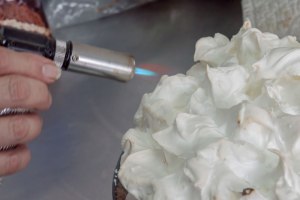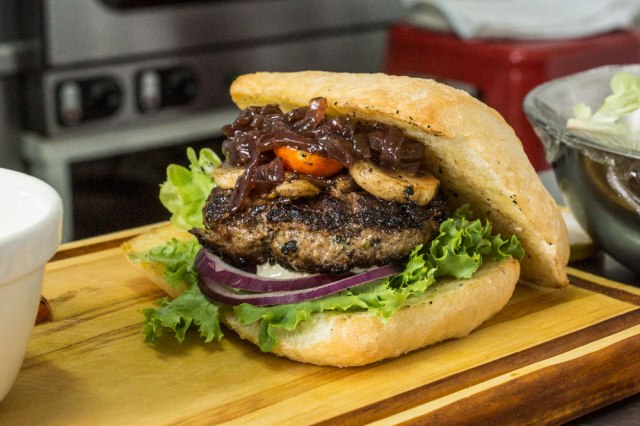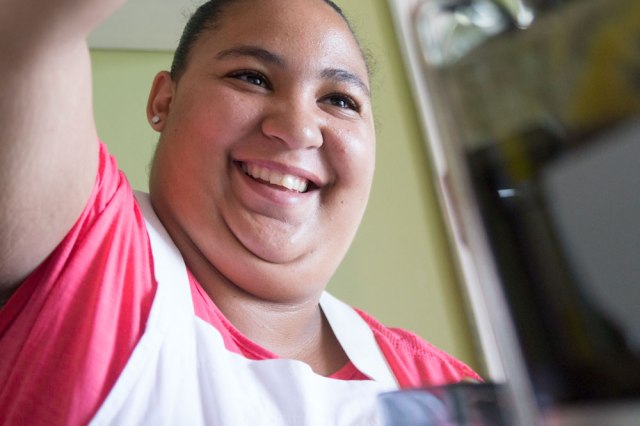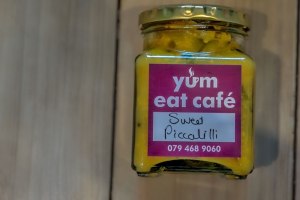 Piccalilli: The Oxford English Dictionary traces the word to the middle of the 18th century when, in 1758, Hannah Glasse described how “to make Paco-Lilla, or India Pickle”. An apparently earlier reference is in Lady Anne Blencowe’s “Receipt Book”, written c. 1694, which has “To Pickle Lila, an Indian Pickle” credited to Lord Kilmory. The more familiar form of the word appears in 1769, in Elizabeth Raffald’s The Experienced English Housekeeper, as “To make Indian pickle, or Piccalillo”. The spelling “piccalilli” can be seen in an advertisement in a 1799 edition of The Times
Piccalilli: The Oxford English Dictionary traces the word to the middle of the 18th century when, in 1758, Hannah Glasse described how “to make Paco-Lilla, or India Pickle”. An apparently earlier reference is in Lady Anne Blencowe’s “Receipt Book”, written c. 1694, which has “To Pickle Lila, an Indian Pickle” credited to Lord Kilmory. The more familiar form of the word appears in 1769, in Elizabeth Raffald’s The Experienced English Housekeeper, as “To make Indian pickle, or Piccalillo”. The spelling “piccalilli” can be seen in an advertisement in a 1799 edition of The Times
Undoubtedly one of the most popular relishes, piccalilli can be eaten with grilled sausages, ham or chops, cold meats or a strong, well-flavoured cheese such as Cheddar. It should contain a good selection of crunchy vegetables in a smooth, mustard sauce.
Makes about 1.8 kg
INGREDIENTS
1 large cauliflower
450 g pickling onions
900 g mixed vegetables, such as marrow, cucumber, green beans
1 cup salt
10 cups cold water
1 cup sugar
2 garlic cloves, peeled and crushed
2 tsp mustard powder
1 tsp ground ginger
4 cups white vinegar
25 g cake flour
15 ml turmeric
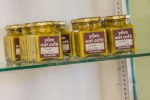
Piccalilli
Divide the cauliflower into small florets, peel and quarter the pickling onions, seed and finely dice the marrow and cucumber, top and tail the beans, then cut them into 2.5 cm lengths. Layer the veggies in a large glass or stainless steel bowl, generously sprinkling each layer with salt. Pour over the water, cover the bowl with clear film and leave to soak for about 24 hours. Drain the soaked veggies and discard the brine. Rinse well in several changes of cold water to remove as much salt as possible, then drain them thoroughly. Put the sugar, garlic, mustard, ginger and 3.75 cups of the vinegar in a pot. Heat gently, stirring occasionally, until the sugar has dissolved. Add the veggies to the pot, bring to the boil, reduce the heat and simmer for 10-15 minutes, or until they are almost tender. Mix the flour and turmeric with the remaining vinegar and stir into the veggies. Bring to the boil, stirring, and simmer for 5 minutes, until the piccalilli is thick.
Spoon into sterilized jars, and store in a cool, dark place for at least 2 weeks. Use within a year.
NOTE: It seems that many countries have their own basic recipes based on the local food preferences. Just to mention a few:
British Piccalilli
British piccalilli contains various vegetables – invariably cauliflower and vegetable marrow – and seasonings of mustard and turmeric. A more finely chopped variety “sandwich piccalilli” is also available from major British supermarkets. It is used as an accompaniment to foods such as sausages, bacon, eggs, toast, cheese, and tomatoes. It is similar to a sweet pickle such as Branston Pickle, except it is tangier and slightly less sweet, coloured bright yellow (using turmeric) rather than brown, and the chunks are larger. It is usually used to accompany a dish on a plate rather than as a bread spread. It is popular as a relish with cold meats such as ham and brawn, and with a ploughman’s lunch. It is produced both commercially and domestically, the latter product being a traditional mainstay of Women’s Institute and farmhouse product stalls.
American Piccalilly
In the Northeastern United States, commercial piccalillis are based on diced sweet peppers, either red or green. This style is somewhat similar to sweet pepper relish, with the piccalilli being distinguished by having a darker red or green color and like British piccalilli, the chunks are larger and it is slightly sweeter. It is a popular topping on such foods as hamburgers and hot dogs. Traditional, British-style yellow piccalilli is also available.
In the Midwestern United States, commercial piccalillis are based on finely chopped gherkins; bright green and on the sweet side, they are often used as a condiment for Chicago-style hot dogs. This style is sometimes called “neon relish”.
In the Southern United States, piccalilli is not commonly served. In its place, chow-chow, a relish with a base of chopped green (unripe) tomatoes is offered. This relish may also include onions, bell peppers, cabbage, green beans and other vegetables. While not exactly similar to other piccalillis, chow-chow is often called as such and the terms may be used interchangeably. Piccalilli is uncommon in the Western United States.
Suriname Piccalilli
A far spicier variant of piccalilli comes from the former Dutch colony of Suriname, where traditional British piccalilli is mixed with a sambal made of garlic and yellow Madame Jeanette peppers. This piccalilli is often homemade but can also be bought in jars in Dutch corner shops. Whilst Surinamese piccalilli is similar in appearance to ordinary piccalilli, the taste is much spicier.

 Piccalilli: The Oxford English Dictionary traces the word to the middle of the 18th century when, in 1758, Hannah Glasse described how “to make Paco-Lilla, or India Pickle”. An apparently earlier reference is in Lady Anne Blencowe’s “Receipt Book”, written c. 1694, which has “To Pickle Lila, an Indian Pickle” credited to Lord Kilmory. The more familiar form of the word appears in 1769, in Elizabeth Raffald’s The Experienced English Housekeeper, as “To make Indian pickle, or Piccalillo”. The spelling “piccalilli” can be seen in an advertisement in a 1799 edition of The Times
Piccalilli: The Oxford English Dictionary traces the word to the middle of the 18th century when, in 1758, Hannah Glasse described how “to make Paco-Lilla, or India Pickle”. An apparently earlier reference is in Lady Anne Blencowe’s “Receipt Book”, written c. 1694, which has “To Pickle Lila, an Indian Pickle” credited to Lord Kilmory. The more familiar form of the word appears in 1769, in Elizabeth Raffald’s The Experienced English Housekeeper, as “To make Indian pickle, or Piccalillo”. The spelling “piccalilli” can be seen in an advertisement in a 1799 edition of The Times


